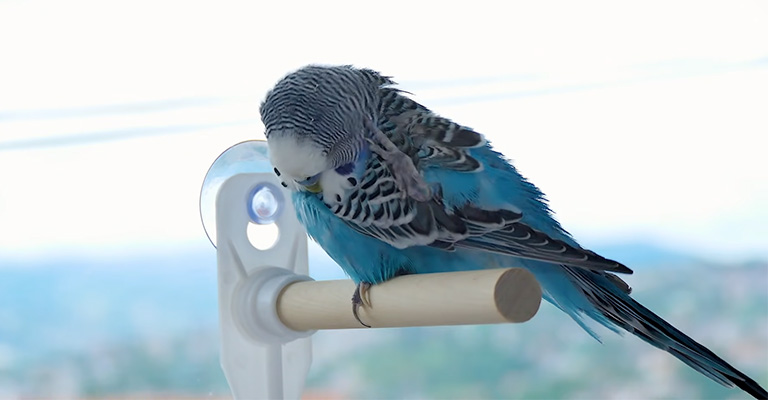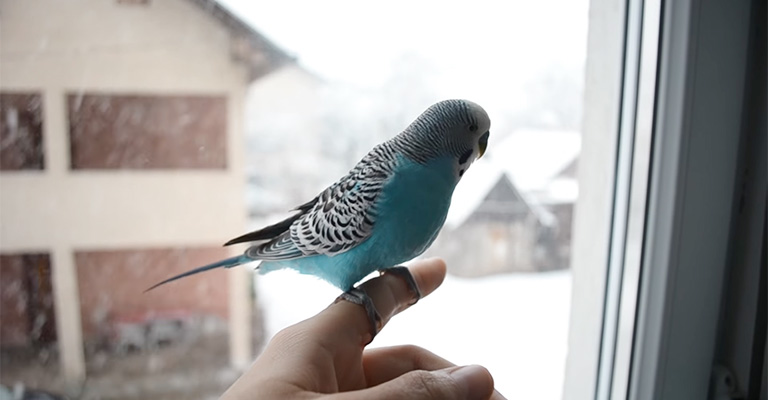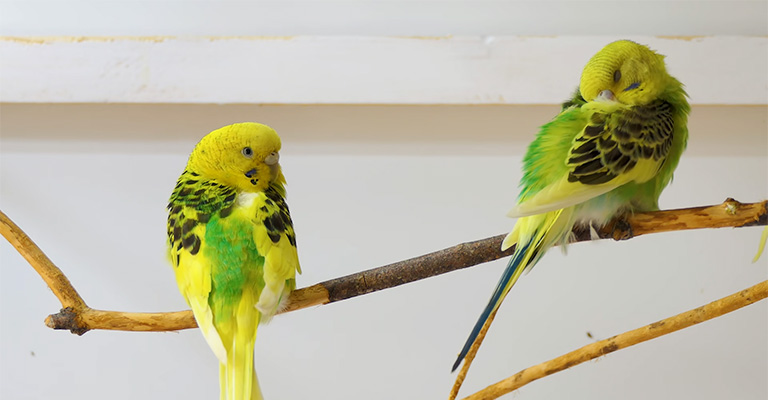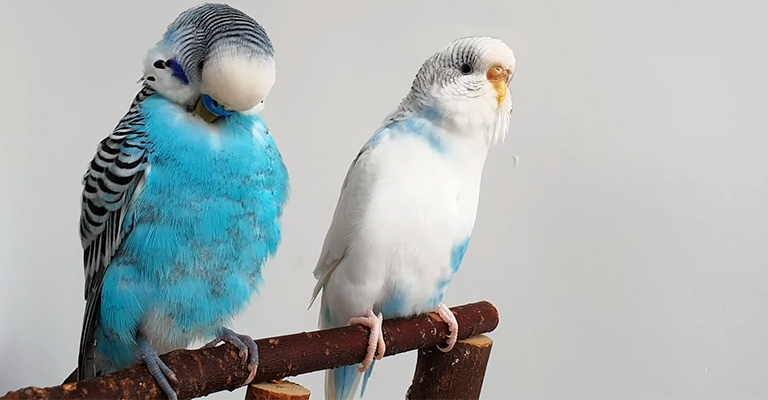Providing a comfortable and suitable environment is essential for the well-being of pet parakeets. These small, colorful birds are native to warmer regions and require specific conditions to thrive in captivity. One of the most crucial factors to consider is maintaining an optimal temperature for their well-being.
Parakeets are highly sensitive to cold temperatures, which can harm their health and overall vitality. In colder climates or during the winter months, it becomes vital for bird owners to take appropriate measures to keep their parakeets warm and cozy.
By understanding the signs of discomfort and implementing effective strategies, such as adjusting the room temperature, providing adequate insulation, and utilizing supplemental heat sources, parakeet owners can ensure the comfort and welfare of their feathered companions throughout the year.
This article will explore parakeet temperatures too cold- how to keep them warm, and content in their living environment.

Why Do Parakeets Need Warmth?
Maintaining a warm and suitable environment is crucial for the well-being of parakeets. Understanding why parakeets need warmth is vital for their comfort, vitality, and overall quality of life. Let’s explore why they need warmth and how to provide it effectively.
Body Temperature Regulation
Parakeets, like all birds, are warm-blooded animals. They have a higher body temperature than humans, averaging around 104 to 106 degrees Fahrenheit (40 to 41 degrees Celsius). Maintaining this internal temperature is vital for their overall health and physiological functions.
Natural Habitat
In the wild, parakeets are native to the warmer regions of Australia. They are adapted to living in a climate with temperatures ranging from 68 to 86 degrees Fahrenheit (20 to 30 degrees Celsius).
The natural environment of parakeets is relatively warm, and their bodies are accustomed to functioning optimally within these temperature ranges.
Metabolic Rate And Energy Expenditure

Parakeets have a fast metabolic rate, meaning they burn energy quickly. This increased metabolism helps sustain their active lifestyles and high energy levels.
Parakeets require a warm environment to maintain their metabolic rate and energy balance. Exposure to cold temperatures can increase energy expenditure as the bird attempts to regulate its body temperature, potentially leading to stress or health issues.
Feather Health And Insulation
Parakeets have unique feather structures that provide insulation and protect them from external elements. The feathers trap air close to their bodies, forming a layer of insulation that helps regulate body temperature.
When exposed to cold temperatures, parakeets may experience difficulty maintaining the proper insulation, making them susceptible to discomfort, illness, or even hypothermia.
Comfort And Well-Being
Warmth plays a significant role in ensuring parakeets’ comfort and overall well-being. Like humans, birds experience temperature preferences and seek environments that provide optimal conditions for their daily activities, such as flying, eating, and socializing.
Providing a warm and comfortable environment for parakeets helps reduce stress levels, promotes a sense of security, and enhances their overall quality of life.
How To Tell If Your Parakeet Is Cold?

Parakeets are very good at hiding their discomfort and illness, so you may wait to notice if your parakeet is cold. However, there are some signs that you can look for to check if your parakeet needs more warmth. Some of these signs are:
Fluffing Up Their Feathers:
This is a natural behavior that parakeets do to trap more air and increase their insulation. However, if your parakeet is constantly fluffed up and looks puffy, it may be a sign that they are too cold and trying to conserve heat.
Tucking Their Head Under Their Wing:
This is another way that parakeets try to keep warm by covering their exposed parts with their feathers. However, if your parakeet does this frequently or for long periods, it may indicate they could be more comfortable and happy.
Shivering
This indicates that your parakeet is cold and needs more heat. Shivering is a reflex that helps generate heat by contracting the muscles, but it also consumes a lot of energy and can weaken your parakeet over time.
Lethargy
If your parakeet is cold, it may become less active and playful. They may spend more time sleeping or resting on the bottom of the cage or a perch. They may also lose their appetite and stop singing or talking.
Respiratory Problems
Cold temperatures can affect your parakeet’s respiratory system, making them more prone to infections and diseases. You may notice that your parakeet has difficulty breathing, wheezing, sneezing, coughing, or nasal discharge.
If you notice any of these signs in your parakeet, you should take action immediately to warm them up and consult a veterinarian if necessary.
How to Keep Your Parakeet Warm

You can keep your parakeet warm and cozy in winter in several ways. Here are some tips that you can follow:
Choose A Suitable Location For The Cage
You should place your parakeet’s cage in a room that has a stable and comfortable temperature of around 20°C (68°F) to 25°C (77°F).
You should avoid placing the cage near windows, doors, air vents, fans, or heaters that can create drafts or sudden temperature changes. It would be best to avoid direct sunlight that can overheat your parakeet or cause sunburn.
Provide Adequate Bedding
You should line the bottom of the cage with a thick layer of paper or wood shavings that can absorb moisture and provide insulation.
You should also offer some soft materials such as cotton balls, tissue paper, or fleece that your parakeet can use to make a nest or burrow into for warmth.
Cover The Cage At Night
You can cover the cage with a blanket or a towel to create a dark and cozy environment for your parakeet. This can help them sleep better and conserve heat.
However, ensure the cover is breathable and does not block air circulation or trap moisture inside the cage. Leave a small opening for your parakeet to see out and feel secure.
Provide A Heat Source:
You can provide a heat source for your parakeet to warm up when they need to.
There are several options that you can choose from, such as:
A Heating Pad
You can place a heating pad under the cage or on one side of the cell that your parakeet can access. You should ensure the heating pad is safe for birds and has a low and constant temperature. You should also monitor the heating pad regularly and replace it if it gets damaged or worn out.
A Heat Lamp
You can hang a light above the cage or on one side of the cell that your parakeet can bask under. You should ensure the heat lamp is designed for birds and has a red or infrared bulb that does not emit bright light. You should also adjust the distance and angle of the heat lamp to avoid overheating or burning your parakeet.
A Heated Perch
You can install a wild perch in the cage where your parakeet can sit and warm their feet. You should ensure the wild nest is suitable for your parakeet’s size and shape and has a safe and comfortable temperature. You should also provide other perches in the cage that are not heated for your parakeet to choose from.
Provide Warm Food And Water
You can provide warm food and water for your parakeet to help them stay hydrated and nourished. You can offer them warm water in a bowl or a bottle that they can drink from.
You can also provide them with warm food such as cooked rice, pasta, oatmeal, or mashed potatoes that they can eat.
However, you should ensure your parakeet’s food and water are not too hot or cold. After an hour, remove any leftover food and water to prevent spoilage or bacteria growth.
FAQ
Parakeets can tolerate temperatures as low as 10°C (50°F) for short periods, but they prefer temperatures between 20°C (68°F) and 25°C (77°F). If the temperature drops below 10°C (50°F), your parakeet may experience hypothermia, which can be fatal.
Parakeets can also suffer from heat stress or heat stroke if exposed to temperatures above 30°C (86°F). Some signs of a hot parakeet are panting, drooping wings, open beak, rapid breathing, dehydration, or loss of consciousness. If you notice any of these signs in your parakeet, you should cool them down immediately by moving them to a shaded and ventilated area, spraying them with water, or placing them on a wet towel. You should also seek veterinary attention if needed.
You should only keep your parakeet inside in winter if you have a well-insulated and heated aviary that can protect them from the cold, wind, rain, snow, predators, and pests. Parakeets are not adapted to survive in outdoor conditions and can quickly get sick or injured if they are exposed to them.
No, you should not use a hot water bottle to warm up your parakeet as it can be dangerous for them. A hot water bottle can leak, burst, or scald your parakeet if they chew on it or sit on it. It can also create a humid and damp environment promoting fungal or bacterial infections.
Yes, you can cuddle with your parakeet to keep them warm as long as they are comfortable and gentle. Cuddling with your parakeet can help them feel safe and loved and strengthen your bond with them. However, you should not force your parakeet to cuddle with you if they do not want to or show signs of stress or fear.
Conclusion
Parakeets are beautiful pets that need warmth and care to thrive. Following the tips in this article, you can keep your parakeet warm and happy in winter and prevent any health problems related to low temperatures.
Continuously monitor your parakeet’s behavior and appearance, and consult a veterinarian if you have any concerns about their well-being.